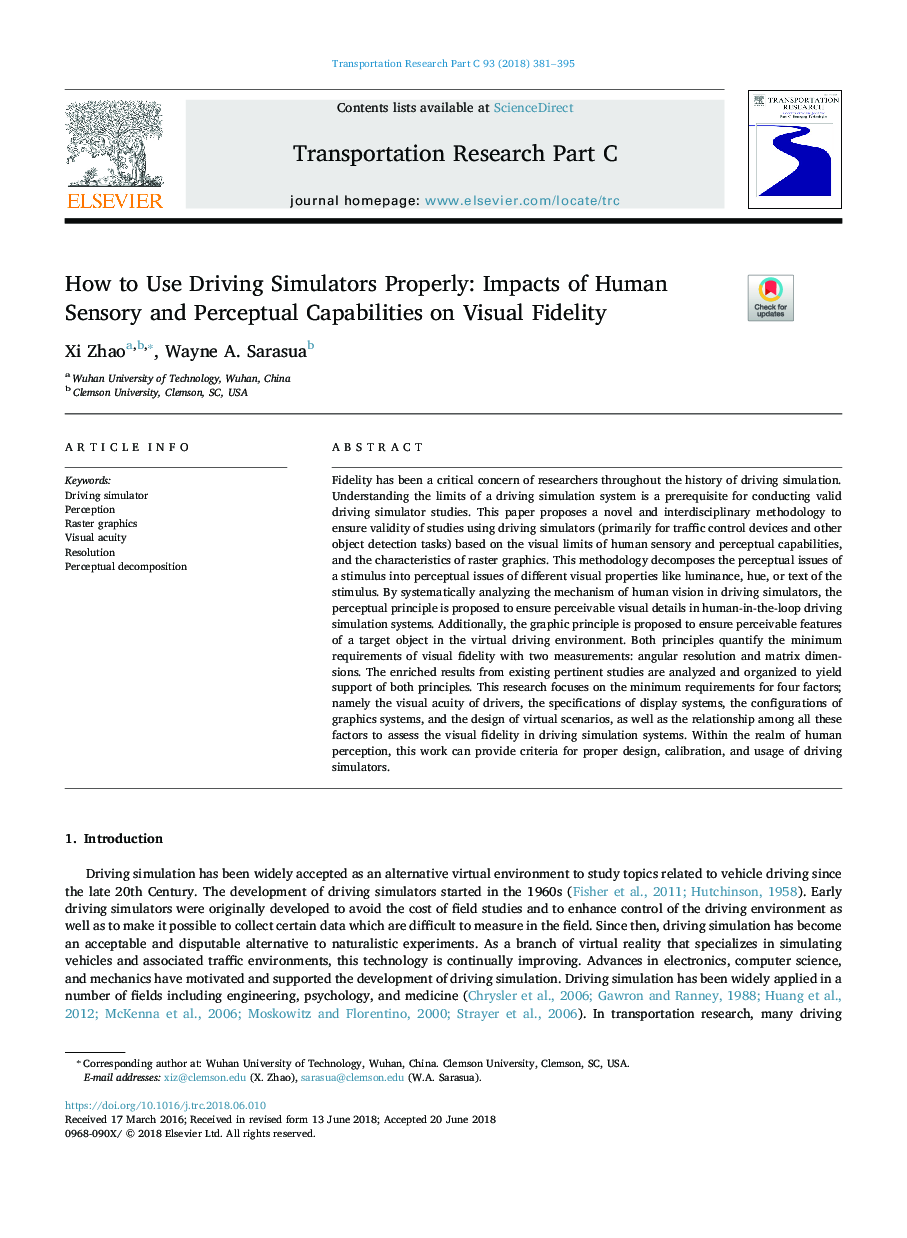| Article ID | Journal | Published Year | Pages | File Type |
|---|---|---|---|---|
| 6935775 | Transportation Research Part C: Emerging Technologies | 2018 | 15 Pages |
Abstract
Fidelity has been a critical concern of researchers throughout the history of driving simulation. Understanding the limits of a driving simulation system is a prerequisite for conducting valid driving simulator studies. This paper proposes a novel and interdisciplinary methodology to ensure validity of studies using driving simulators (primarily for traffic control devices and other object detection tasks) based on the visual limits of human sensory and perceptual capabilities, and the characteristics of raster graphics. This methodology decomposes the perceptual issues of a stimulus into perceptual issues of different visual properties like luminance, hue, or text of the stimulus. By systematically analyzing the mechanism of human vision in driving simulators, the perceptual principle is proposed to ensure perceivable visual details in human-in-the-loop driving simulation systems. Additionally, the graphic principle is proposed to ensure perceivable features of a target object in the virtual driving environment. Both principles quantify the minimum requirements of visual fidelity with two measurements: angular resolution and matrix dimensions. The enriched results from existing pertinent studies are analyzed and organized to yield support of both principles. This research focuses on the minimum requirements for four factors; namely the visual acuity of drivers, the specifications of display systems, the configurations of graphics systems, and the design of virtual scenarios, as well as the relationship among all these factors to assess the visual fidelity in driving simulation systems. Within the realm of human perception, this work can provide criteria for proper design, calibration, and usage of driving simulators.
Related Topics
Physical Sciences and Engineering
Computer Science
Computer Science Applications
Authors
Xi Zhao, Wayne A. Sarasua,
